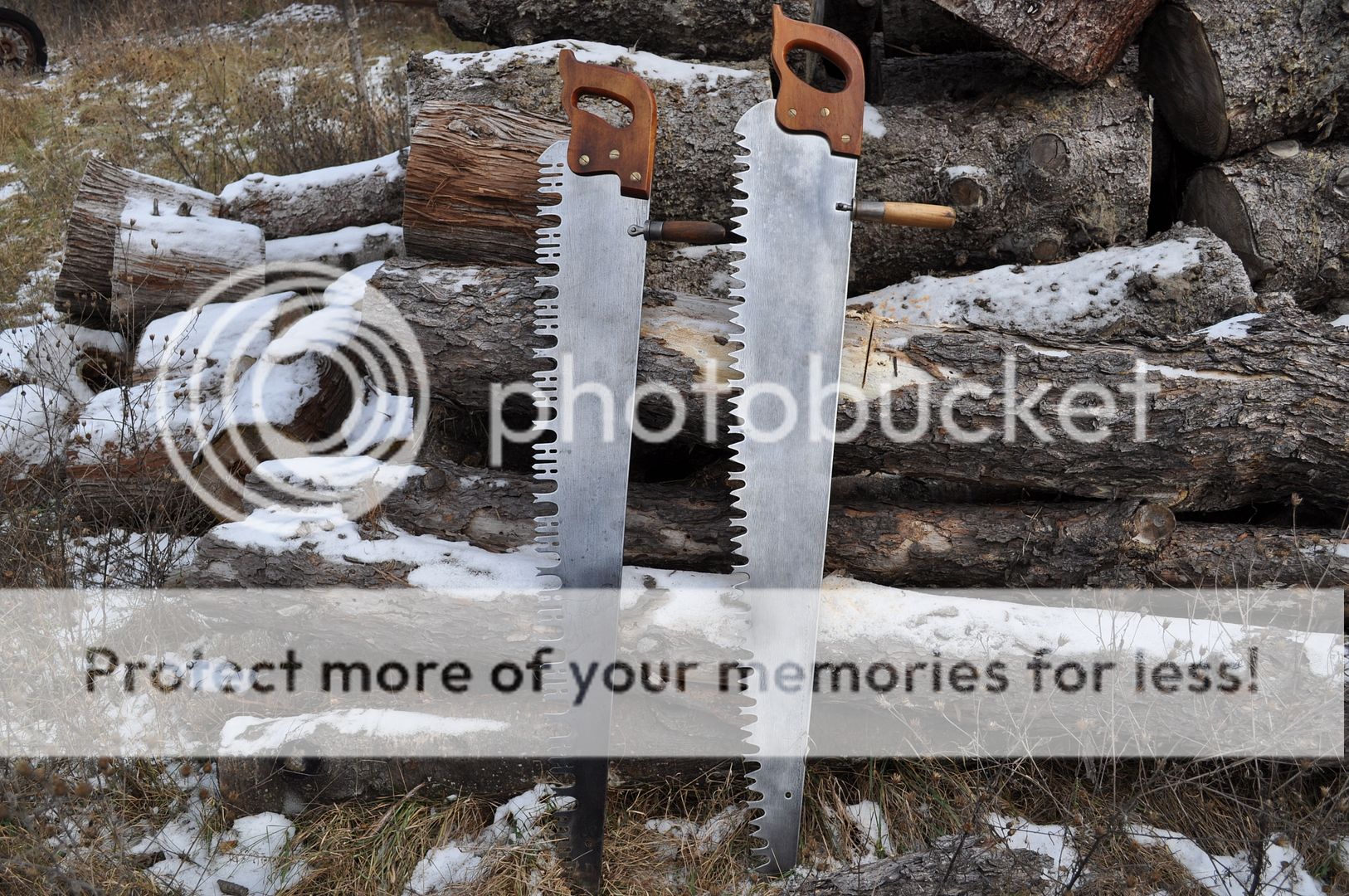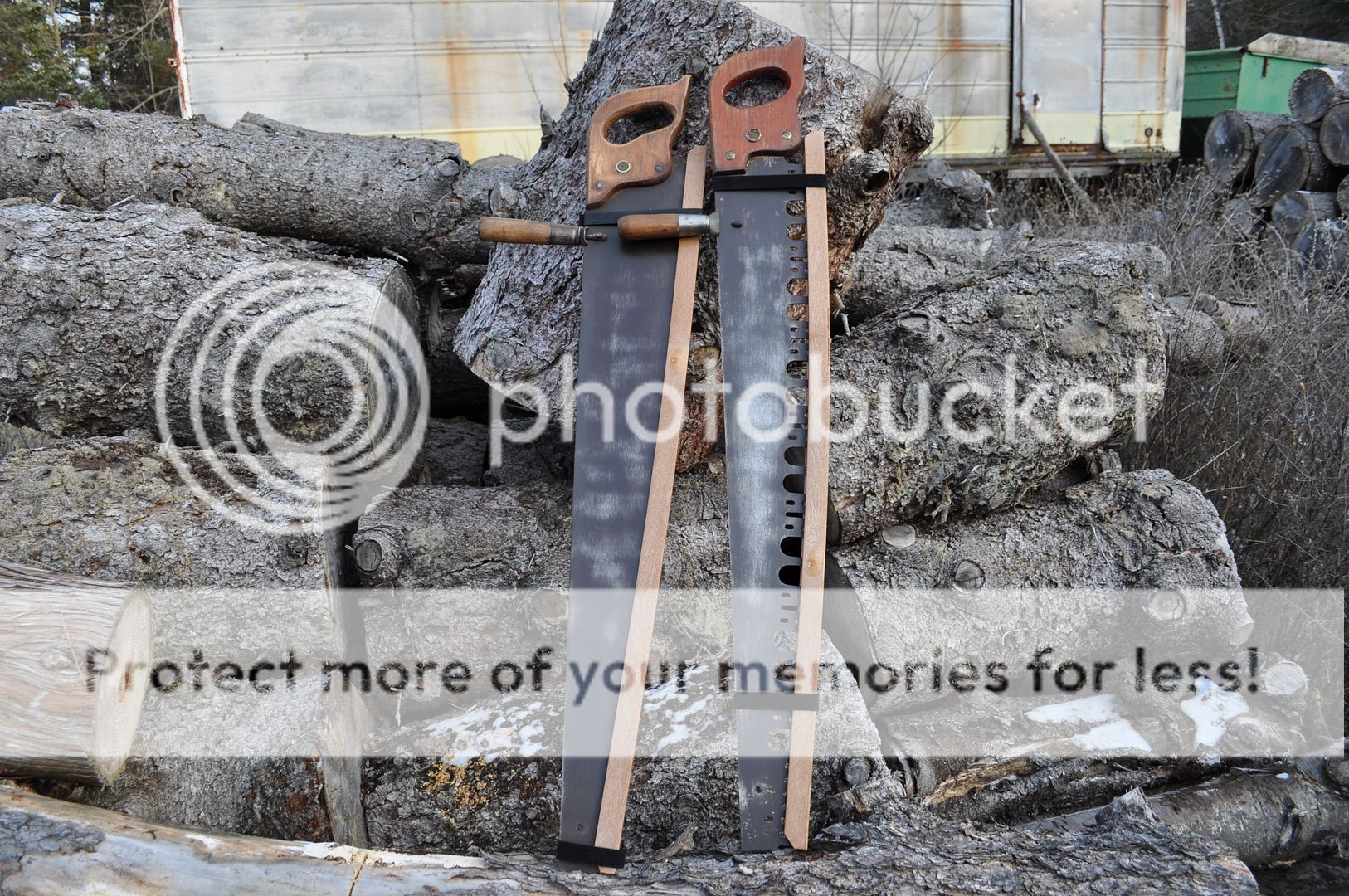- Joined
- Mar 12, 2011
- Messages
- 214
I've used water and the fine side of an axe stone with good results too. Just dry it off good and rub a little oil in when youre done.
The BladeForums.com 2024 Traditional Knife is available! Price is $250 ea (shipped within CONUS).
Order here: https://www.bladeforums.com/help/2024-traditional/
Electrolysis tank or wire cup on an angle grinder.


An angle grinder will work....But most of the information I've read on restoring crosscut saws say say away from power tools to clean them up.
Nice Job.Got a 48" just like it I love, I Also just picked up a like new Anderson gauge.
Wanted one for a long time,bit the bullet and just bought it,Now a gibs long jointer,those are pricey,using the knock off now.Anderson gauge is the was to go for filing rakers. It will give you perfectly consistent angles inside the V and you never have to worry about overfiling if you use it correctly. Pricey though.
I had the pleasure of meeting an old timer at a fair doing a filing demonstration last fall. He was in his eighties, so sadly you could tell he wasn't filing many saws anymore. However, they had two saws he'd filed on a log they had set up. It was yellow poplar (a not so hard hardwood) and single bucking the saw cleared perfect whiskerless noodles in nice clean piles. I asked to look at his filing gear expecting to see all the toys - Gibbs jointers, Anderson Gauges, Morin Sets, NOS red tang files, Martin Winter's raker gauges, etc. Nope. His little toolbox had a few nicholson files, a ball peen hammer, a couple spiders, an anvil a buddy had welded for him, and an Atkins Excelsior combo gauge (the cheapest one on ebay, ~$15). He just knew how to use them right.
Because I'm nowhere near as good as that guy, I tend to use my Atkins #15 more than anything else.





I second that.hanks for the detailed tutorial.
I still have a lot to learn.
Dang you guys! Just what I needed, another project.
I have had a crosscut saw that has followed me around for 30 years. I cleaned it up and found an etch that I have identified. It was not good news. The dreaded Curtis saw. So I have heard that the older ones were good saws. Thing is, what is old? Do I file first to find out? Will a newbe be able to tell? I do know that the saw was made before 1970. Anyone with advice? No problem here telling me if I own a POS. Just want to know before I put more labor into it.
Thanks!
I've heard of people who said that even the new ones can be made to cut very will with some work. if you check the saw, just look at the straightness, whether or not the teeth are set evenly, etc. that will speak to the quality i think.
Dang you guys! Just what I needed, another project.
I have had a crosscut saw that has followed me around for 30 years. I cleaned it up and found an etch that I have identified. It was not good news. The dreaded Curtis saw. So I have heard that the older ones were good saws. Thing is, what is old? Do I file first to find out? Will a newbe be able to tell? I do know that the saw was made before 1970. Anyone with advice? No problem here telling me if I own a POS. Just want to know before I put more labor into it.
Thanks!
